Introduction
SWIM is about collaborative organisations realising ATM information exchanges using information services that are interoperable and reusable. Interoperability has many aspects ranging from the integration of business processes across collaborating organisations to the technical linking of information systems, and is achieved through the reuse of common standards. The following picture shows these concepts in relation to their surrounding landscape:
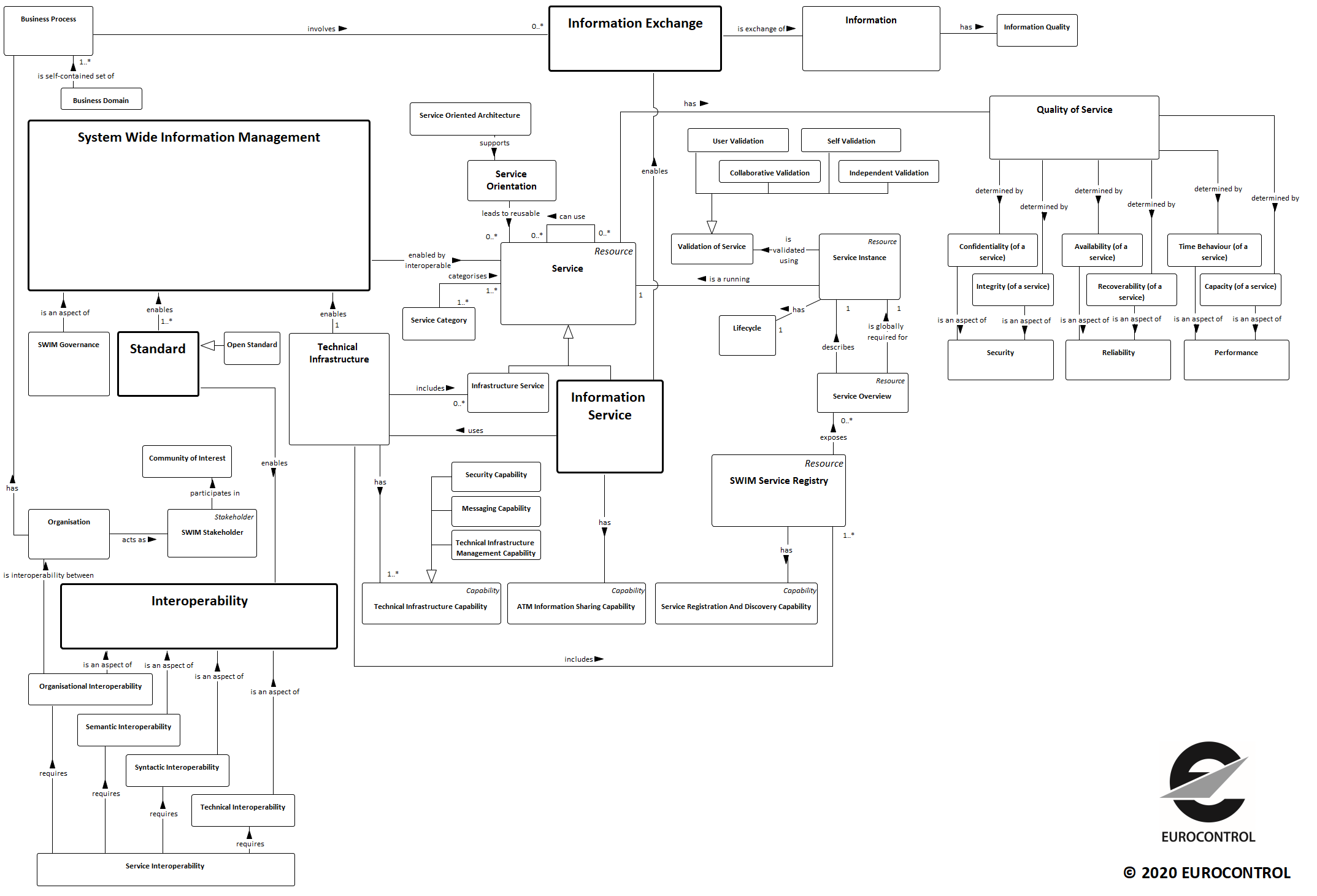
Information Services Principles
Six principles drive the information exchanges in SWIM:
- Use of interoperable information services. Following service orientation, interoperable services are based on operational needs, and are re-usable. Information services cross-cut two other primary SWIM concept components: information and technical infrastructure.
- Separation of information provision and information consumption. An information service is self-contained and isolates a service consumer from implementation details. This enables more plug-and-play interactions between service providers and consumers.
- Loose coupling. A design characteristic that fosters minimal dependencies between system components. Service interfaces are designed to minimize technology lock-in.
- Discoverability. A SOA characteristic that fosters the availability of information about services using a service description or overview to the benefit of service consumers.
- Use of open standards. A design characteristic to standardize SWIM building blocks using open standards made available to the general public and maintained via a collaborative and consensus driven process.
- Secure information exchange. A design characteristic that fosters security as a paramount aspect of SWIM.
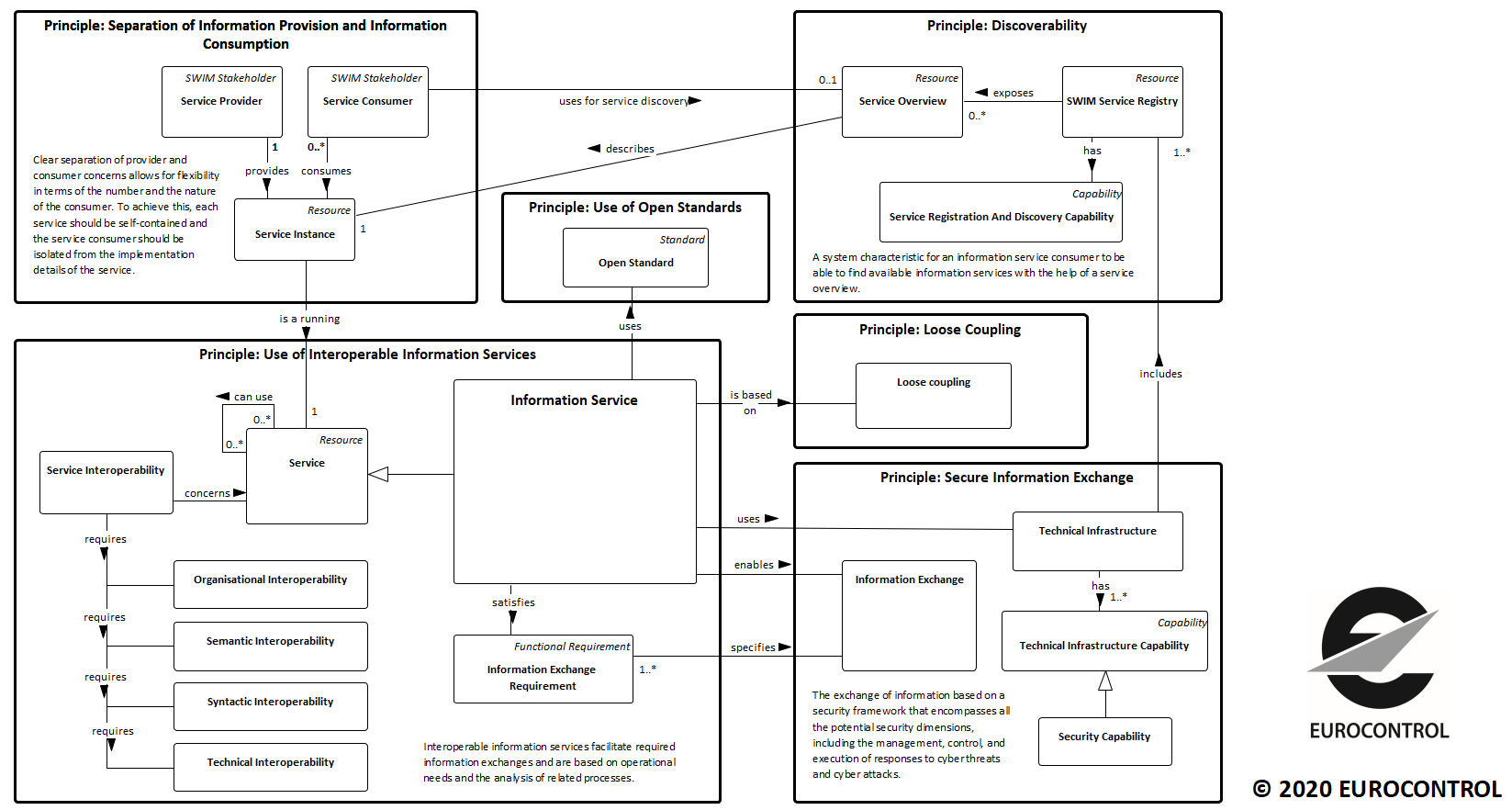
Information
The notion of information service is at the heart of SWIM. An information service contextualizes data as information, and enables its exchange. The notion of information service payload designates the assembly of information exchanged using an information service. Data is formatted by exchange schemas, which are essential parts of the information exchange models. These exchange schemas play the role of standardized exchange languages that formalize data exchanges in a particular domain context.
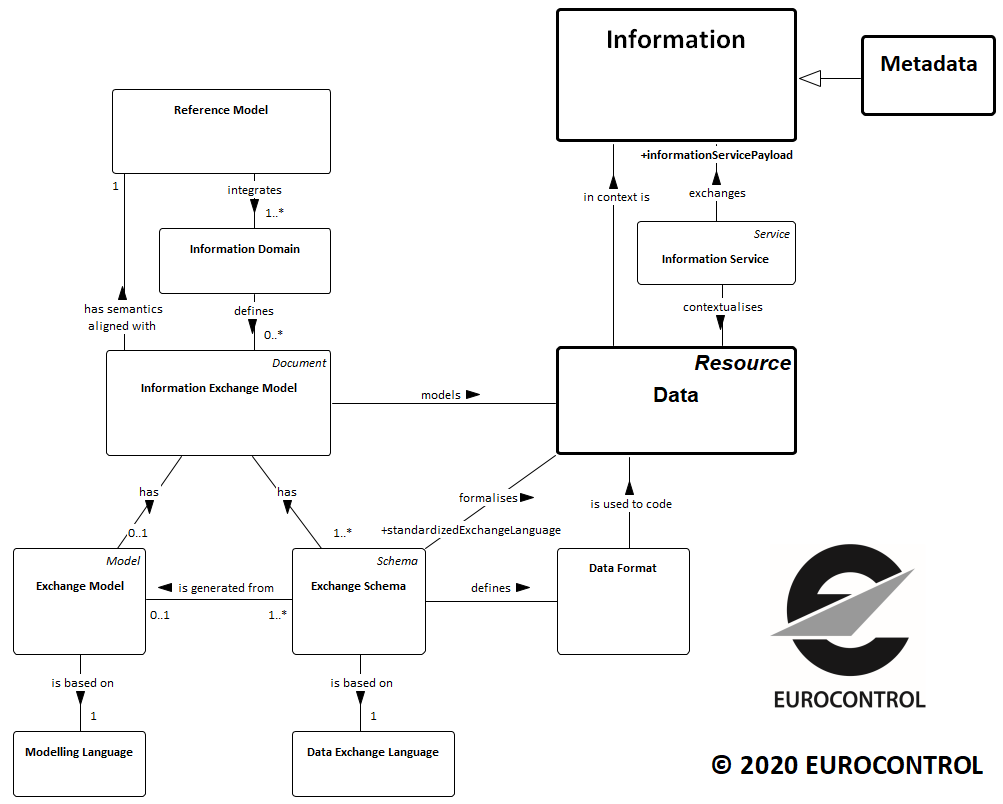
Information Service
An information service performs a function with a defined level of quality which are determined by the functional and non-functional requirements that the service satisfies. An information service has interfaces, operations and messages that altogether put data in context and enable their exchange.
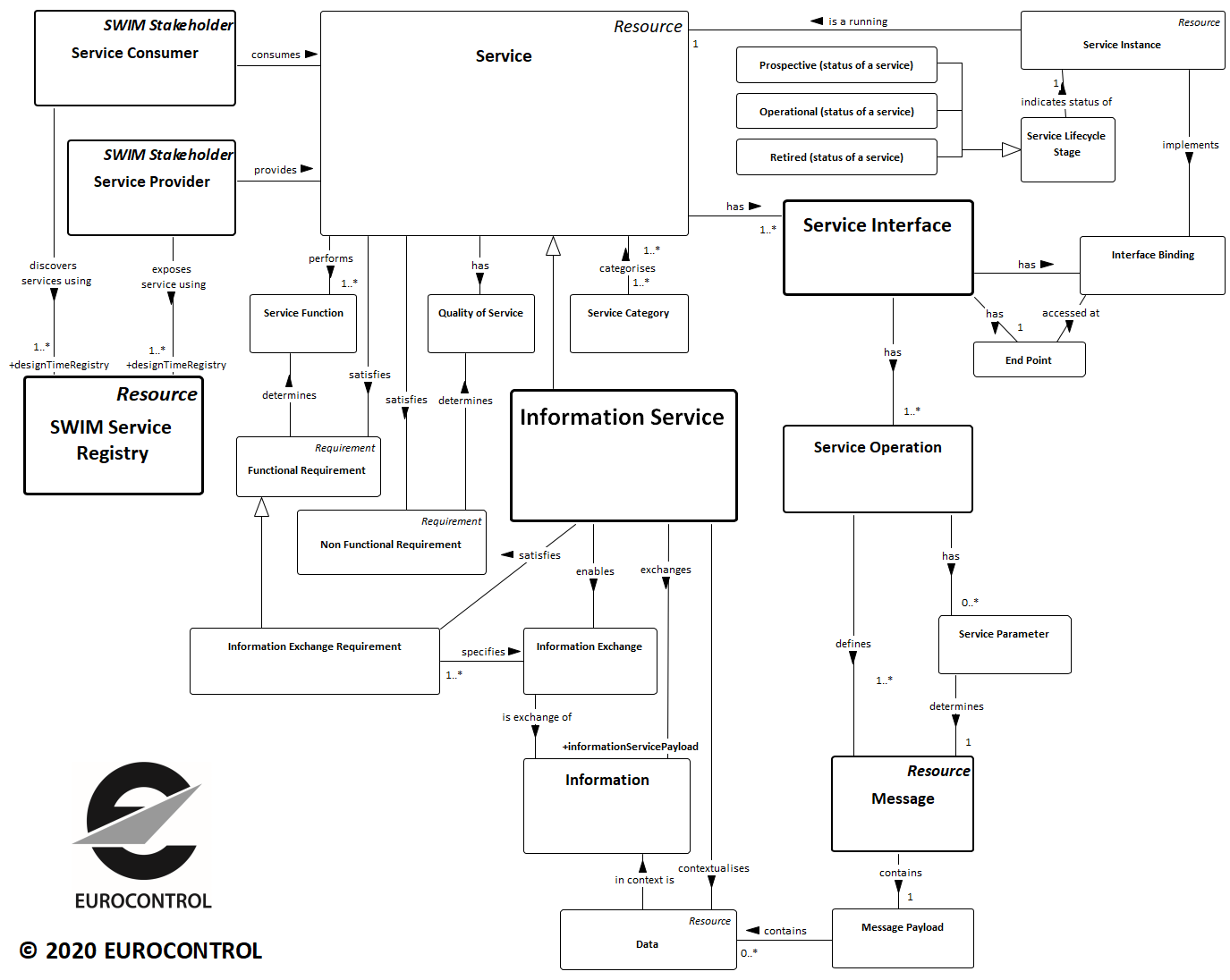
Metadata
Metadata is a particular type of information about a resource. In SWIM, the notion of metadata covers among others service metadata, message metadata and data set metadata. Data set metadata includes data related metadata such as statements about data quality.
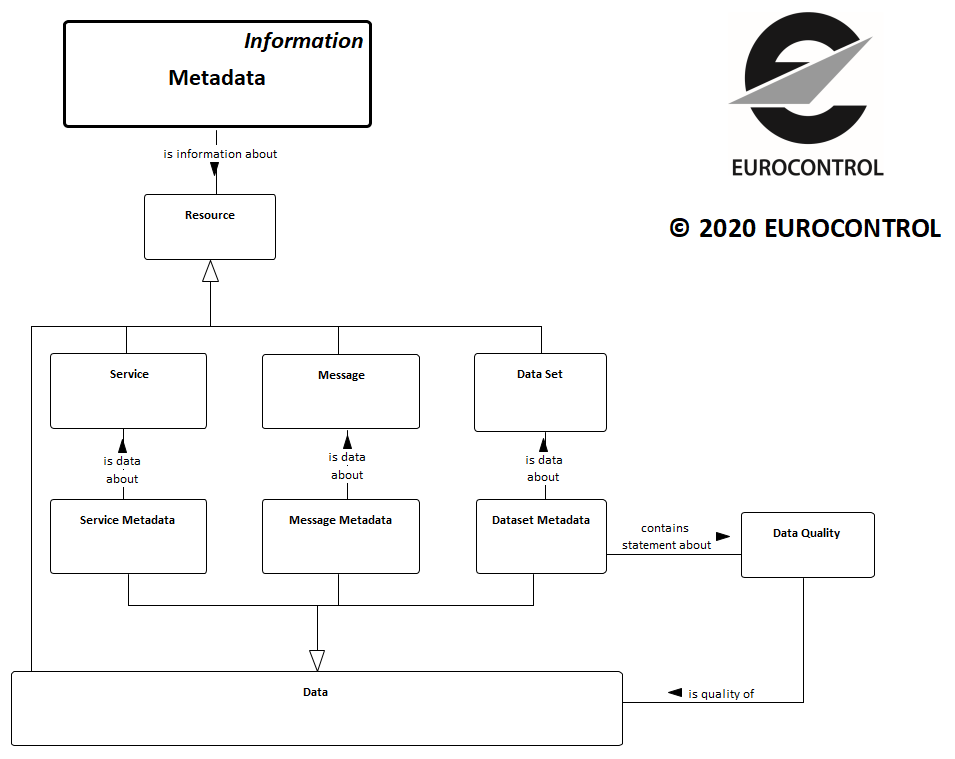
Service Definition
Service metadata is commonly exposed by SWIM Service Registries. Service overviews and service descriptions are examples of resources capturing service metadata. Service overviews are used by service consumers for initial discovery of the service instances that are or will be available for consumption. Service descriptions are used by service consumers to discover service instances and understand how they can be used.
The implementations of service instances may be harmonized across service providers. Service definitions are documents produced by communities of interest that can be used by service providers for implementing a service instance in a way that is consistent with other implementations.
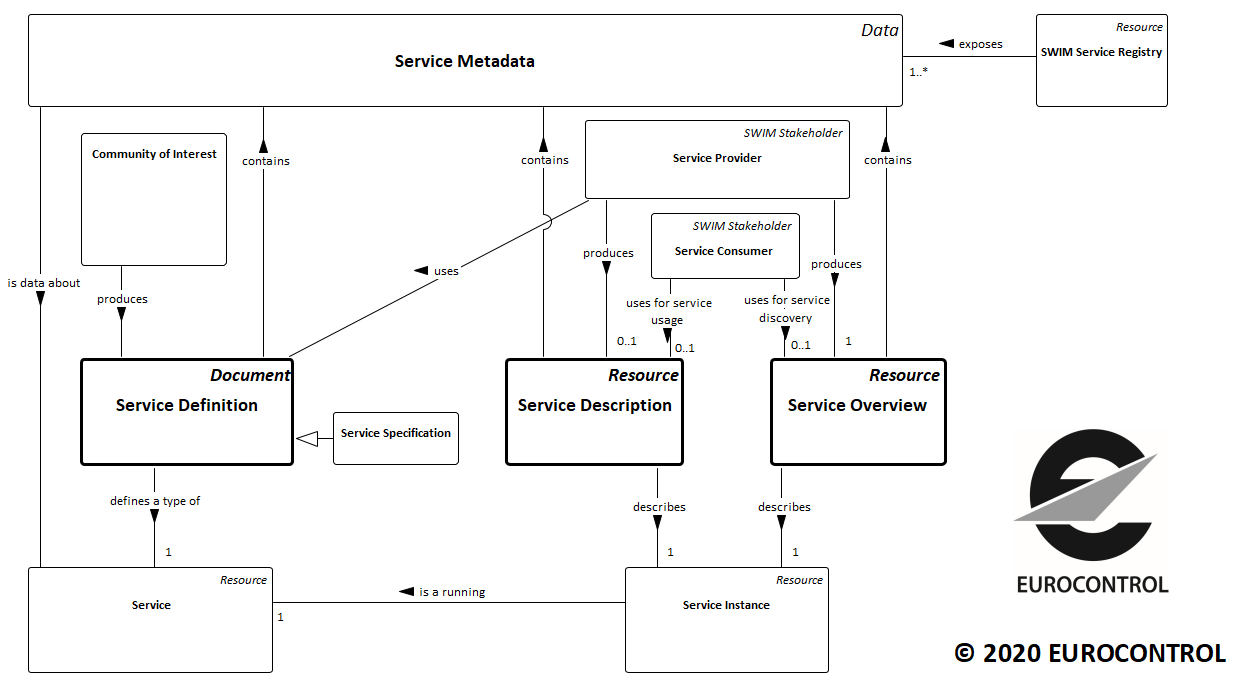
Message and MEP
Message metadata is an essential constituent of a message, together with the message payload. It is commonly dictated by the protocols of the technical infrastructure that are used for transporting the message. These protocols also specify templates for the communication of messages between interacting components called message exchange patterns (MEPs). There are two categories of message exchange patterns:
- The MEPs that are directly related to the capability of the lower level protocols of the technical infrastructure, called primitive MEPs
- The MEPs that describes the information interactions at application level, called application MEPs. These MEPs are implemented using the primitive MEPs specified by the protocols of the technical infrastructure.
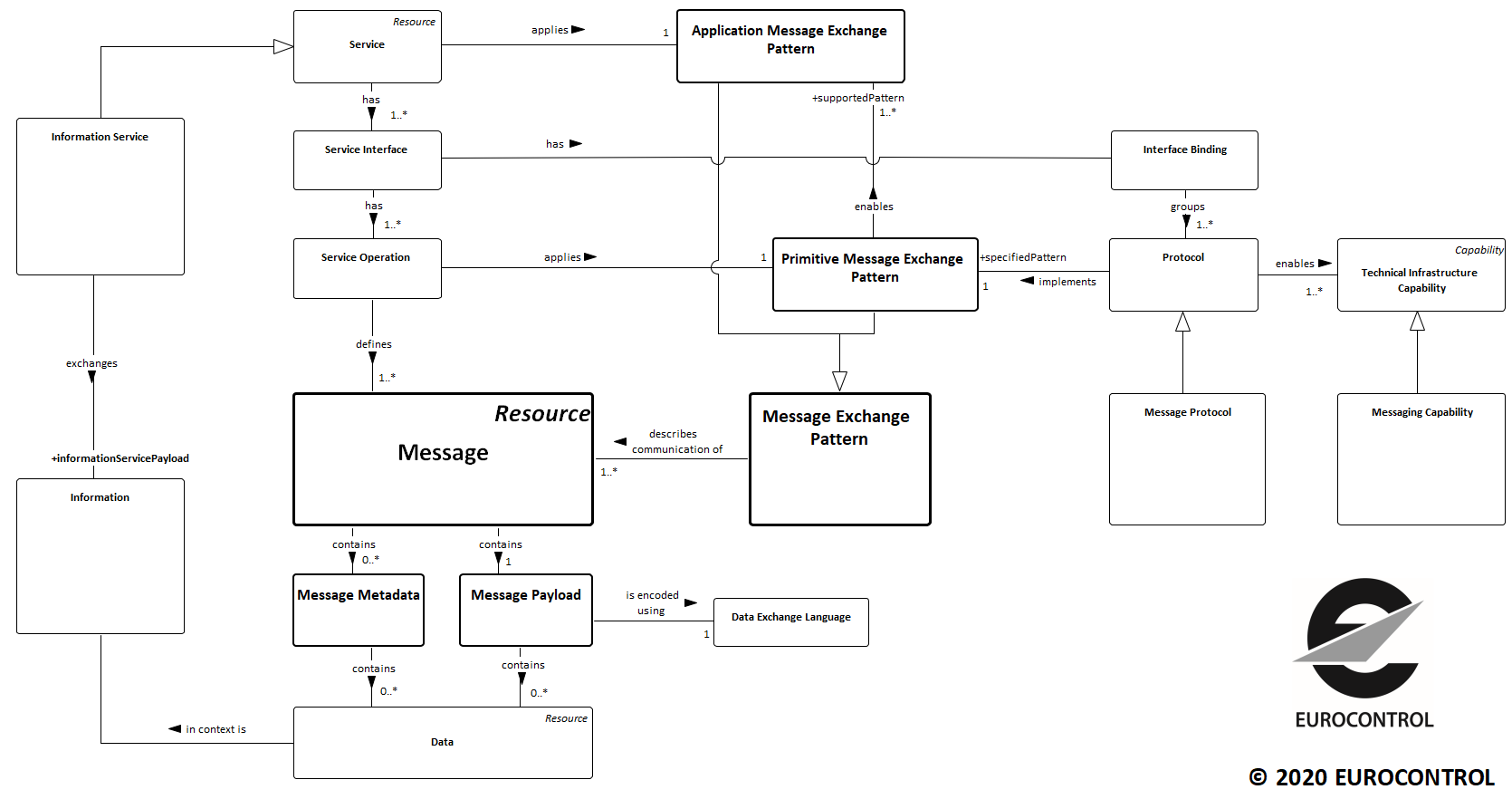
Technical Infrastructure
The technical infrastructure designates the assembly of software and hardware used to enable the provision of information services. In the context of SWIM, the technical infrastructure is commonly referred to as infrastructure, but is not to be confused with the wider notion of IT infrastructure. The technical infrastructure includes infrastructure services and common infrastructure components such as the SWIM Service Registries. The technical infrastructure profiles specify particular groupings of data formats and protocols called interface bindings that can be used for implementing information services.
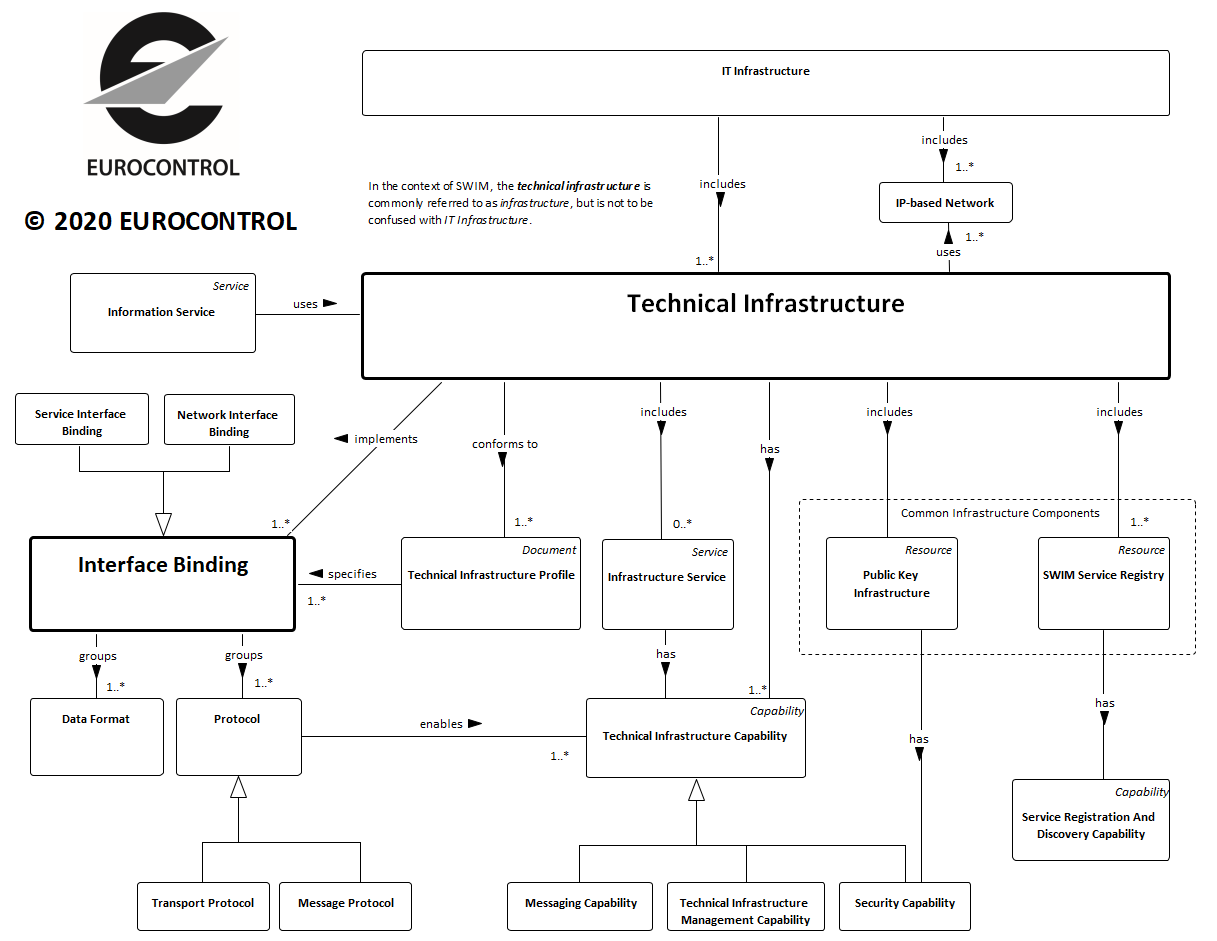
RESOURCES
RElated knowledge
This article introduces the interoperability architecture. It is provided as an example on how to organise the building blocks used in SWIM.
This article introduces a service orientation process. It is an indicative reference for an architectural approach starting from requirements and ending in a running service instance available for operational use.
Last revision: May 25, 2020